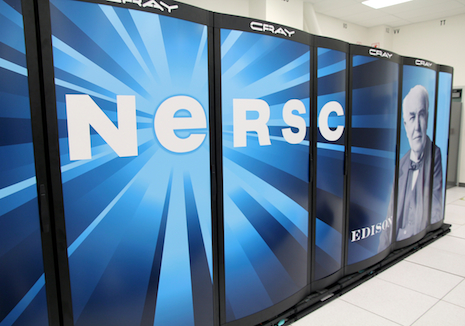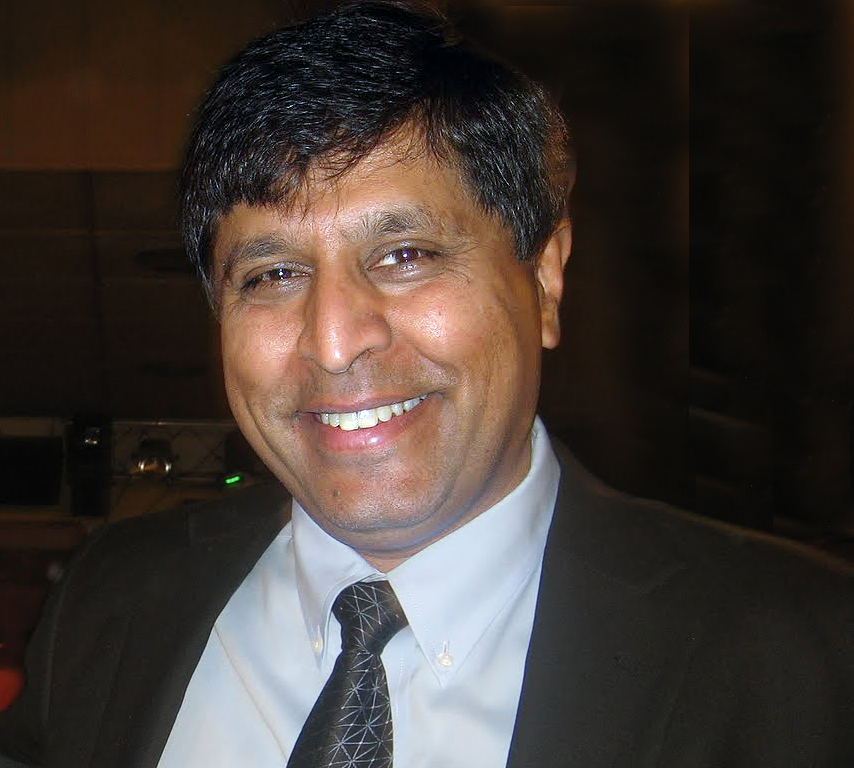 Seminario CdLM e Dottorato del 14.07.14 (11:00-13:00) (ai partecipanti sarà riconosciuto 1 CFU)
Seminario CdLM e Dottorato del 14.07.14 (11:00-13:00) (ai partecipanti sarà riconosciuto 1 CFU)
Cagliari, 11 luglio 2014 (sn) - Il 14 luglio sara’ a Cagliari Sudip Dosanjh, direttore del NESRC, il National Energy Research Scientific Computing Center di Berkley.
Di seguito l’abstract dell’incontro:
Big Computing, Big Data, Big Science
"Enabling Extreme-scale Science at NERSC"
Sudip Dosanjh
Director, NERSC
Il Seminario si svolgerà in Aula Magna Teatro Anatomico (Via Ospedale 121, fronte Palazzo delle Scienze)
With more than 5,000 users from universities, natio

nal laboratories and industry, the National Energy Research Scientific Computing (NERSC) Center supports the largest and most diverse research community of any computing facility within the U.S. Department of Energy (DOE). We provide large-scale, state-of-the-art computing for DOE’S unclassified research programs in alternative energy sources, climate change, energy efficiency, environmental science and other fundamental science areas.
NERSC recently installed our newest supercomputing platform, a Cray XC30 system named “Edison” in honor of American inventor Thomas Alva Edison. Scientists from around the globe eagerly queued up to take advantage of the new supercomputer’s capabilities. Edison was the first Cray supercomputer with Intel processors, a new Aries interconnect and a dragonfly topology. The system was designed to optimize data motion, which is the primary bottleneck for many of our applications, as opposed to peak speed. It has very high memory bandwidth, interconnect speed and bisection bandwidth. In addition, each node has twice the memory of many leading systems. This combination of fast data motion and large memory per node make it well suited for both our traditional HPC workload and newly emerging data intensive applications.
NERSC’s primary mission is to accelerate scientific discovery at the DOE’s Office of Science through high performance computing and data analysis. In 2013 we provided 1.25 billion computer hours to our users, and 2013 proved to be a productive year for scientific discovery at the center. In 2013, our users published 1,977 refereed papers and 18 journal cover stories based on the computations performed at NERSC. In addition, long-time NERSC user Martin Karplus, who has been computing at NERSC since 1998, was honored with a Nobel Prize in Chemistry for his contributions to the field of computational chemistry.
A clear trend at NERSC is that a growing number of scientific discoveries involve the analysis of extremely large data sets from experimental facilities. For the last four years, more data has been transferred to NERSC than away from NERSC, representing a paradigm shift for a supercomputing center. Most months we ingest more than a Petabyte of data.
The demands for larger and more detailed simulations, massive numbers of simulations, and the explosion in the size and number of experimental data sets mean the there is no end in sight to the need for NERSC resources. This talk will describe NERSC’s strategy for bringing together big computing and big data in the next decade to achive big science.
Biographical Sketch
Dr. Sudip Dosanjh is Director of the National Energy Research Scientific Computing (NERSC) Center at Lawrence Berkeley National Laboratory. NERSC’s mission is to accelerate scientific discovery at the U.S. Department of Energy’s Office of Science through high performance computing and extreme data analysis. NERSC deploys leading-edge computational and data resources for over 4,500 users from a broad range of disciplines. NERSC will be partnering with computer companies to develop and deploy pre-exascale and exascale systems during the next decade.
Previously, Dr. Dosanjh headed extreme-scale computing at Sandia National Laboratories. He was co-director of the Los Alamos/Sandia Alliance for Computing at the Extreme-Scale from 2008-2012. He also served on the U.S. Department of Energy’s Exascale Initiative Steering Committee for several years.
Dr. Dosanjh had a key role in establishing co-design as a methodology for reaching exascale computing. He has numerous publications on exascale computing, co-design, computer architectures, massively parallel computing and computational science.
He earned his bachelor’s degree in engineering physics in 1982, his master’s degree (1984) and Ph.D. (1986) in mechanical engineering, all from the University of California, Berkeley.
(sn)
 Seminario CdLM e Dottorato del 14.07.14 (11:00-13:00) (ai partecipanti sarà riconosciuto 1 CFU)
Seminario CdLM e Dottorato del 14.07.14 (11:00-13:00) (ai partecipanti sarà riconosciuto 1 CFU) nal laboratories and industry, the National Energy Research Scientific Computing (NERSC) Center supports the largest and most diverse research community of any computing facility within the U.S. Department of Energy (DOE). We provide large-scale, state-of-the-art computing for DOE’S unclassified research programs in alternative energy sources, climate change, energy efficiency, environmental science and other fundamental science areas.
nal laboratories and industry, the National Energy Research Scientific Computing (NERSC) Center supports the largest and most diverse research community of any computing facility within the U.S. Department of Energy (DOE). We provide large-scale, state-of-the-art computing for DOE’S unclassified research programs in alternative energy sources, climate change, energy efficiency, environmental science and other fundamental science areas.
 University of Cagliari
University of Cagliari
